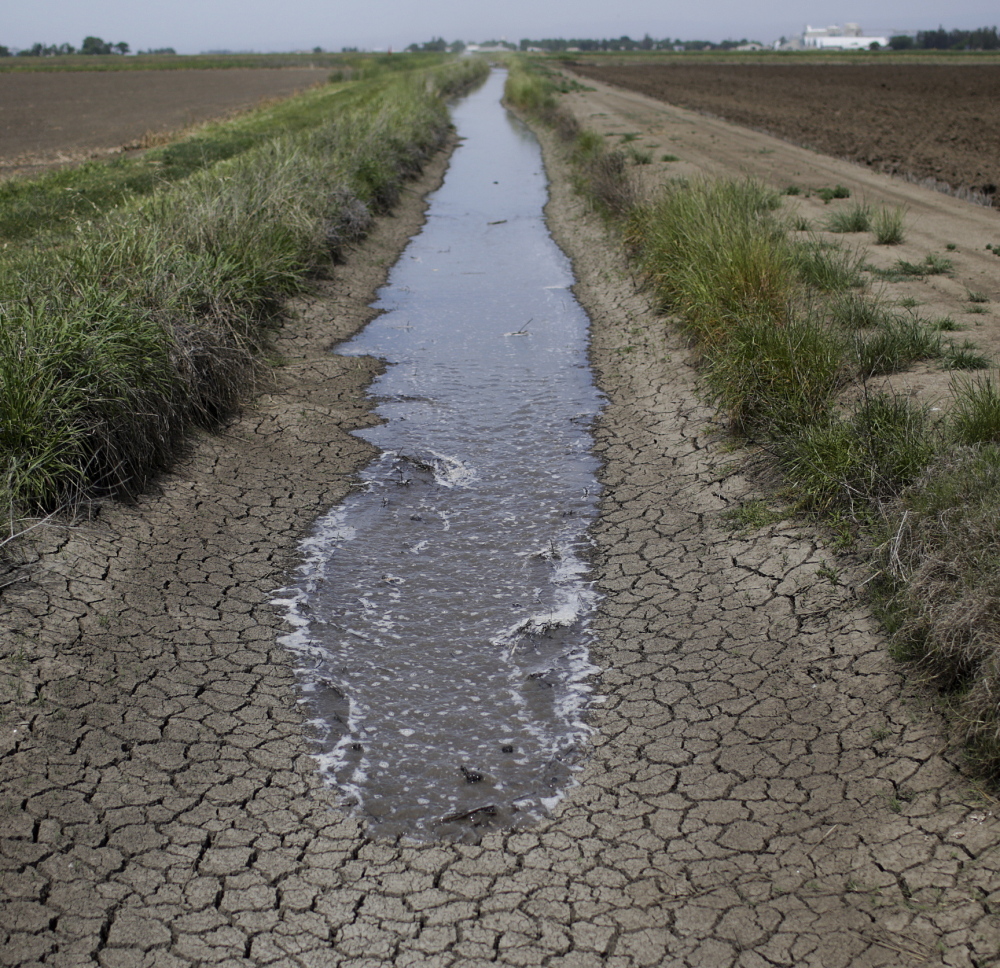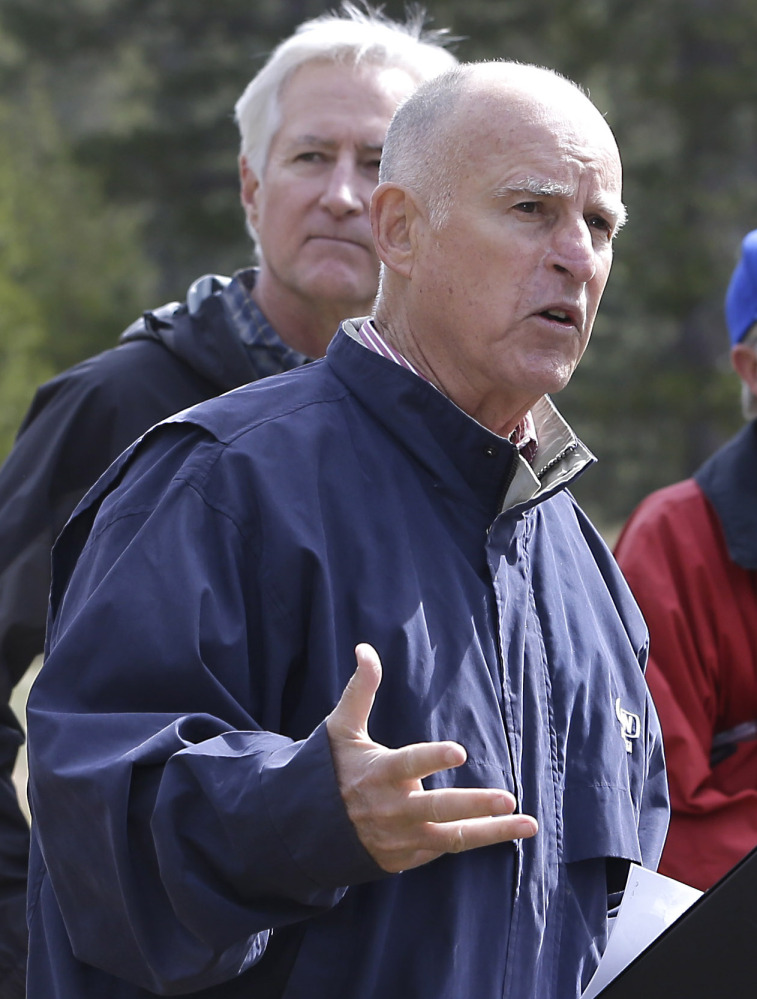California Gov. Jerry Brown, announced strict new curbs on state water use Wednesday to combat a worsening drought affecting more than 50 million people in the western United States.
The executive order imposes mandatory water reductions across California to reduce water usage by 25 percent. Brown announced the new restrictions on a mountain near Lake Tahoe, where state officials gathered to conduct an annual snowfall measure. The field where the measurement took place has averaged 66 inches of snow on April 1 since records began in 1950; today, there is no snow on the ground.
“Today we are standing on dry grass where there should be five feet of snow,” Brown said Wednesday.
While the eastern United States weathered a colder-than-usual winter, a warm and dry winter west of the Rocky Mountains has state officials concerned that the years-long drought will worsen this summer. The drought has diminished urban water supplies, taxed state budgets and created an environment ripe for a disastrous fire season.
Near Tahoe, the ground is bare of snow.
“There’s nothing up there,” said Doug Carlson, a spokesman for the state Department of Water Resources, who drove to the site over the weekend. “You can’t see snow in any direction from the snow course,” where the measurement takes place.
The drought spreads across every western state. Oregon and Washington have both recorded record-low snowpacks this year, and 33 percent of all western land is experiencing severe, extreme or exceptional drought levels, according to the National Oceanic and Atmospheric Administration, including more than 93 percent of California. More than 52 million people live in drought-affected areas, according to NOAA data.
California got at least some relief in December and February, when rainstorms swept through the state. But the situation is still bleak: Every single river in California has recorded lower year-to-date precipitation levels than the historical average, according to data maintained by the California Department of Water Resources.
Ordinarily, the state relies on snow runoff for about 30 percent of its water supply. This year, that runoff won’t be there. Carlson said that leads state officials to conclude the drought will worsen.
State officials have had to cut back dramatically on the amount of water they allocate to farmers, cities and other users. The State Water Project said last month customers will get only 20 percent of the water they request, though that level is well above the five percent the agency allocated in 2014.
Send questions/comments to the editors.




Success. Please wait for the page to reload. If the page does not reload within 5 seconds, please refresh the page.
Enter your email and password to access comments.
Hi, to comment on stories you must . This profile is in addition to your subscription and website login.
Already have a commenting profile? .
Invalid username/password.
Please check your email to confirm and complete your registration.
Only subscribers are eligible to post comments. Please subscribe or login first for digital access. Here’s why.
Use the form below to reset your password. When you've submitted your account email, we will send an email with a reset code.